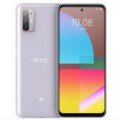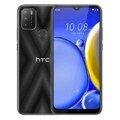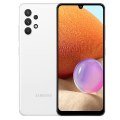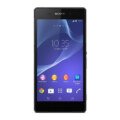HTC One S

HTC One S - Specs
Overview
| Launch | 01 April 2012 |
| Status | Available |
Design
| Body Type Design Type called form factor refers to a mobile phone's size, shape, and style as well as the layout and position of major components of phone. There are three major form factors seen in mobile phones => bar phones, folding phones and sliding phones. | Bar |
| Dimensions | 130.9 x 65 x 7.8 mm (5.15 x 2.56 x 0.31 in) |
| Weight | 119.5 g (4.20 oz) |
| Colors | Black |
Display
| Display Type Display Technology => A number of display technologies and types used in mobile phones => TFT (Thin Film Transistor), IPS (In-Place Switching), OLED (Organic Light Emitting Diode), AMOLED (Active-Matrix Organic Light-Emitting Diode), Super AMOLED (an even advanced version of AMOLED), Resistive Touchscreen (Resistive touchscreens contain two layer of conductive material with a very small gap between them which acts as a resistance), Capacitive Touchsceen (Capacitive touchscreen technology consists of a layer of glass coated with a transparent conductor) | Super AMOLED |
| Display Size Size of the area where pictures and videos are displayed. | 4.3 inches |
| Resolution | 540 x 960 pixels |
| Display Colors Display Colors is refers to the number of different shades of colors that the screen is capable of displaying => 64K colors, 256K colors and 16 million colors, Obviously 16M is highest available range of colors and better than others. | 16M colors |
| Protection Display Protection => Gorilla Glass is a special alkali-aluminosilicate glass shield with exceptional damage resistance that helps protect mobile displays from scratches, drops, and bumps of everyday use, It is always better to go for a smartphone with Gorilla Glass for that added protection and peace of mind. | Corning Gorilla Glass |
Camera
| Primary Camera Camera is able to capture photographs and usually videos, The most important characteristics of a camera are the resolution (measured in megapixels), lens focus type (fixed or automatic), higher megapixel cameras are known to capture higher quality photos, but not always a good measurement of the photos quality. | 8 mega pixels |
| Video | Yes, 1080p@30fps, stereo sound recording |
| Camera Features | Geo-tagging, autofocus, touch focus, Simultaneous HD video and image recording, face and smile detection |
| Flash Flash Light => There is commonly two types of flash lights are used in camera mobile phones, LED Flash (LED flash offers lower power consumption with drive circuitry that takes up very little room, LEDs can be strobed faster than any other light source), Xenon Flash (xenon flash produces an extremely intense full-spectrum white light for a very short duration) | LED flash |
Core Specification
| CPU CPU (Central Processing Unit) mostly known as processors, CPU processes instructions in order to carry out certain functions that make your device operate properly. Processors are often described as the brain of computers, smartphones and tablets, Smartphones and tablets rely on processors to carry out their every task, Processors are an incredibly important factor in selecting any type of computing device, including your smartphone. | Dual-core 1.5 GHz Krait |
| Chipset Chipset is a group of integrated circuits designed to perform one or a more dedicated functions, often with real time computing constraints, Popular smartphones are equipped with more advanced embedded chipsets that can do many different tasks depending on their programming. | Qualcomm MSM8290 Snapdragon |
| GPU GPU (Graphics Processing Unit) is a single-chip processor designed to rapidly manipulate and alter memory to accelerate the creation of images in a frame buffer intended for output to a display, This includes things such as lighting effects, object transformations, and 3D motion. | Adreno 225 |
| RAM (Memory) RAM (Random Access Memory) is a type of computer memory that can be accessed randomly, any byte of memory can be accessed without touching the preceding bytes that allows information to be stored and accessed quickly from random locations. RAM is the most common type of memory found in computer systems, smartphones, tablets and other electronic devices. | 1 GB |
| Internal Storage Internal Storage is a data storage space (flash memory) mostly used in smartphones, tablets and other electronic devices where operating system, apps, music, photos, videos, files and other user data Is stored. | 16 GB |
Specification
| 3.5 mm Jack 3.5 mm jack is mostly found on earphones or headphones. | No |
| SIM Type | No |
| NFC NFC (Near field communication) is a set of standards for smartphones and similar devices to establish peer-to-peer radio communications with each other by touching them together or bringing them into proximity, usually no more than a few inches. | No |
| Infrared Infrared connectivity is an old wireless technology used to connect two electronic devices. It uses a beam of infrared light to transmit information and so requires direct line of sight and operates only at close range. | No |
HTC One S boasts a head-turning design on our thinnest phone yet. With beauty both inside and out, our new 4.3-inch display delivers a rich viewing experience like you’ve never seen before. You’ll love the camera that captures every moment (even in low light) with crisp, vivid, beautiful photos. Plus, with Beats Audio™ you hear authentic, deep sound with true, finely-tuned details.
With this camera you never miss a shot. Capture every moment with a camera that starts-up in less than a second, and has rapid-fire continuous shooting. You’ll never again have to choose between capturing a video or a picture—with VideoPic you can get both at the same time. And you’ll get the best images even under the worst conditions: low light, no light and back light… None are a problem.
Sound on your HTC One S phone is worth bragging about. With Beats Audio™, listening is truly different. Whether playing music or games, watching movies or videos, or your in-car experience, you get rich, authentic sound. Plus with our integrated music experience, easily access all your music libraries, favorite audio apps and internet radio simultaneously from one convenient location.
HTC One S comes in two exceptional finishes. The first goes through a special process that transforms the surface into a ceramic, super-dense finish that is three times more durable than stainless steel. The second finish is a gradient, anodized metal with a striking light-to-dark fade across the phone.




















